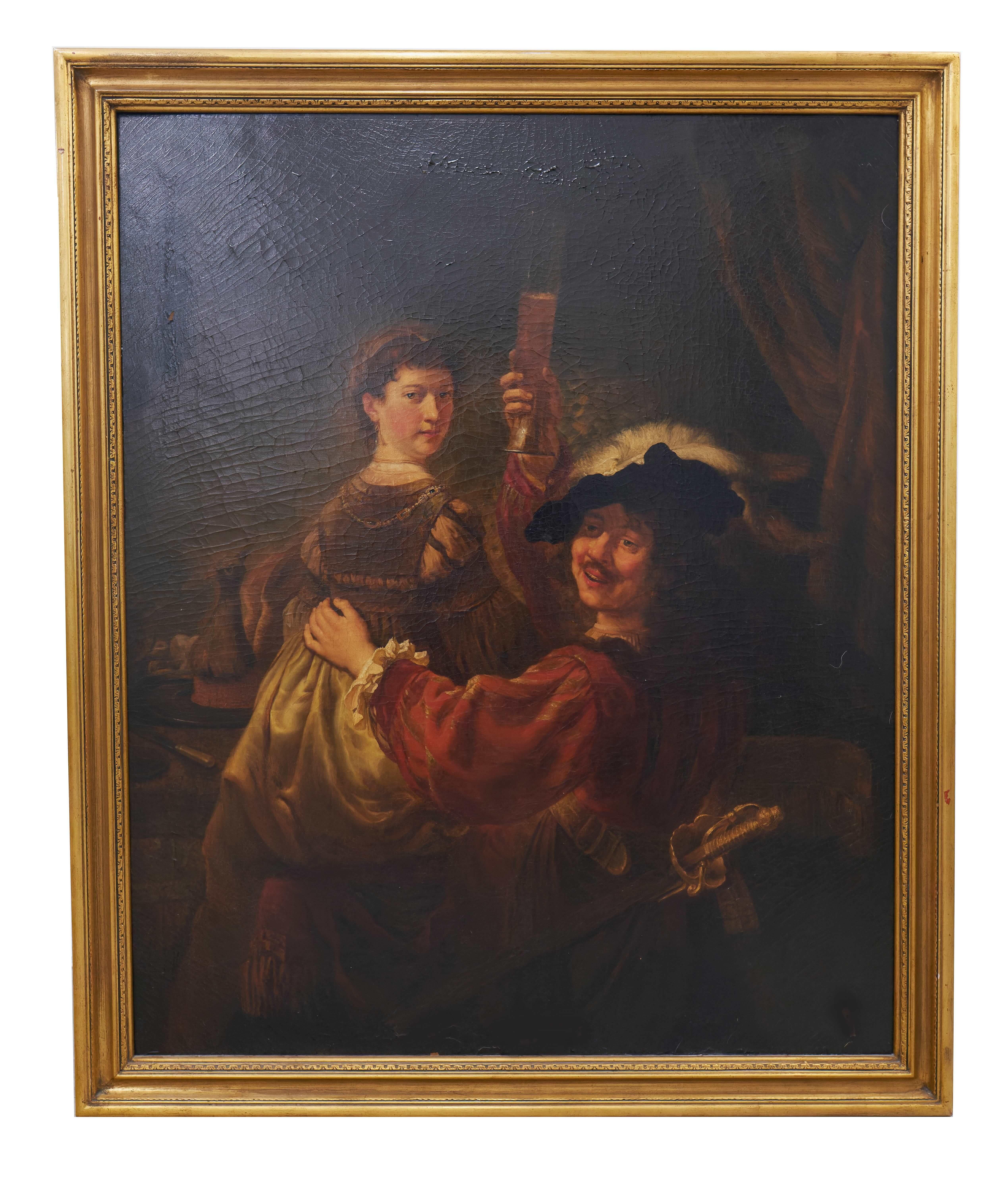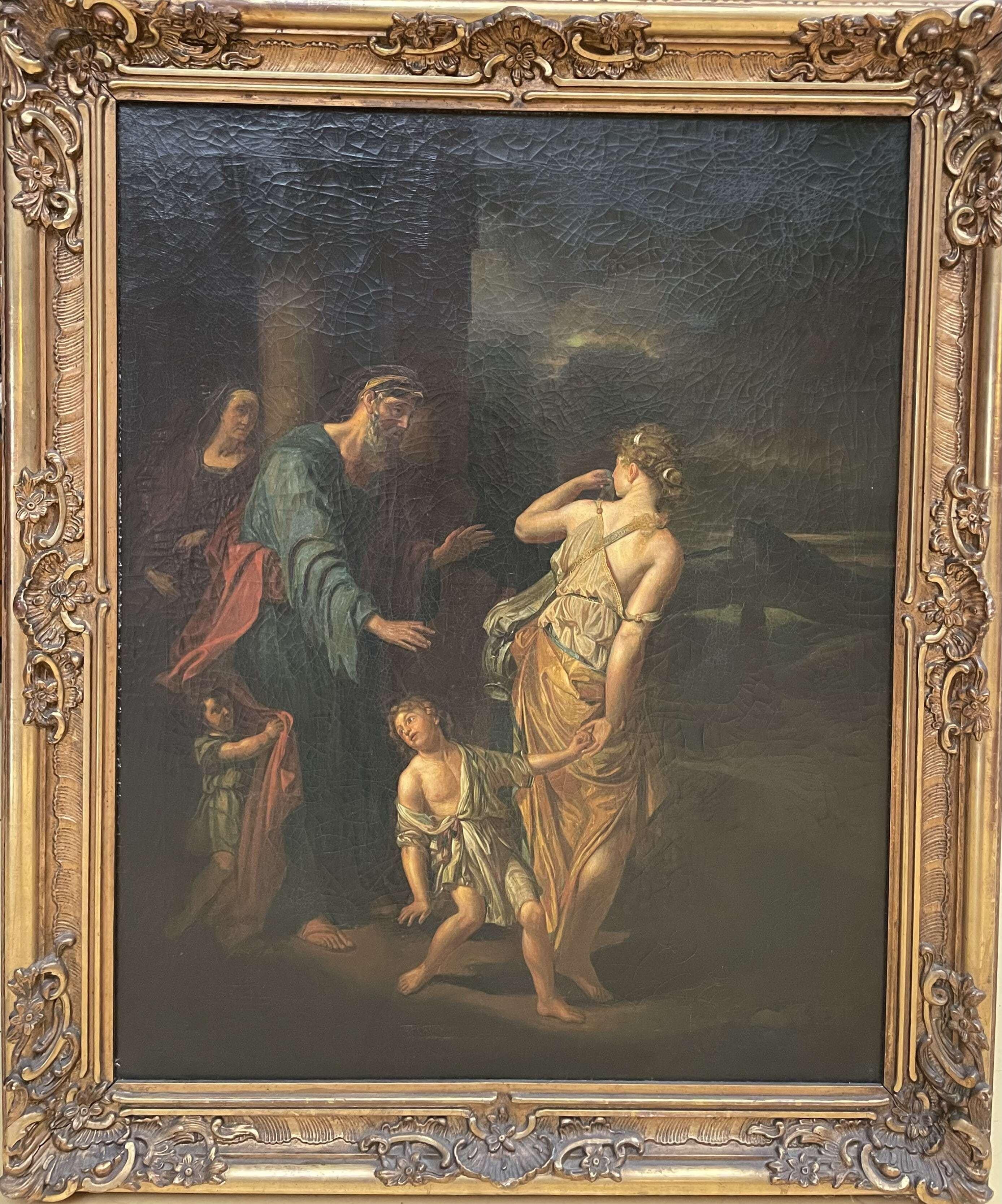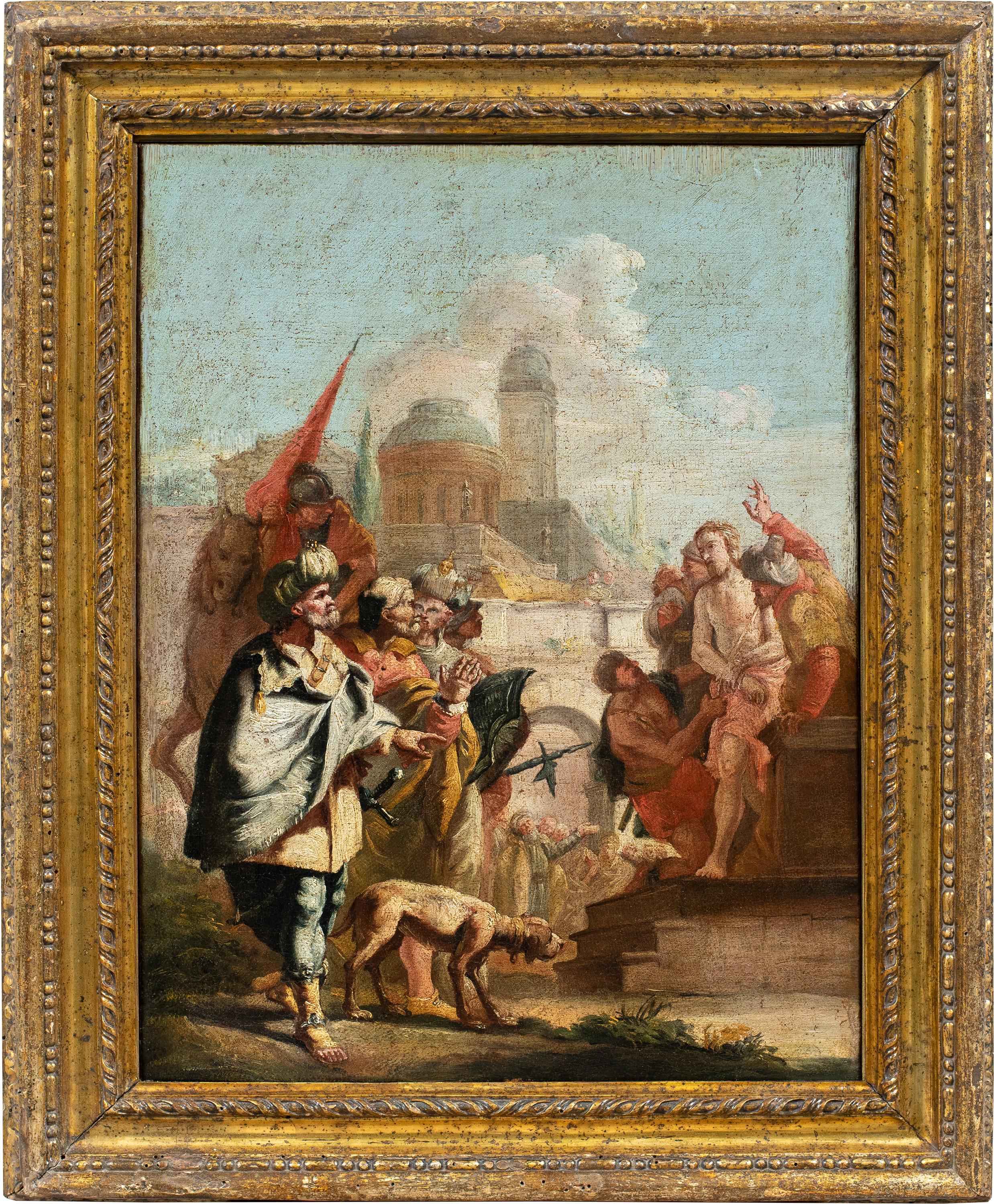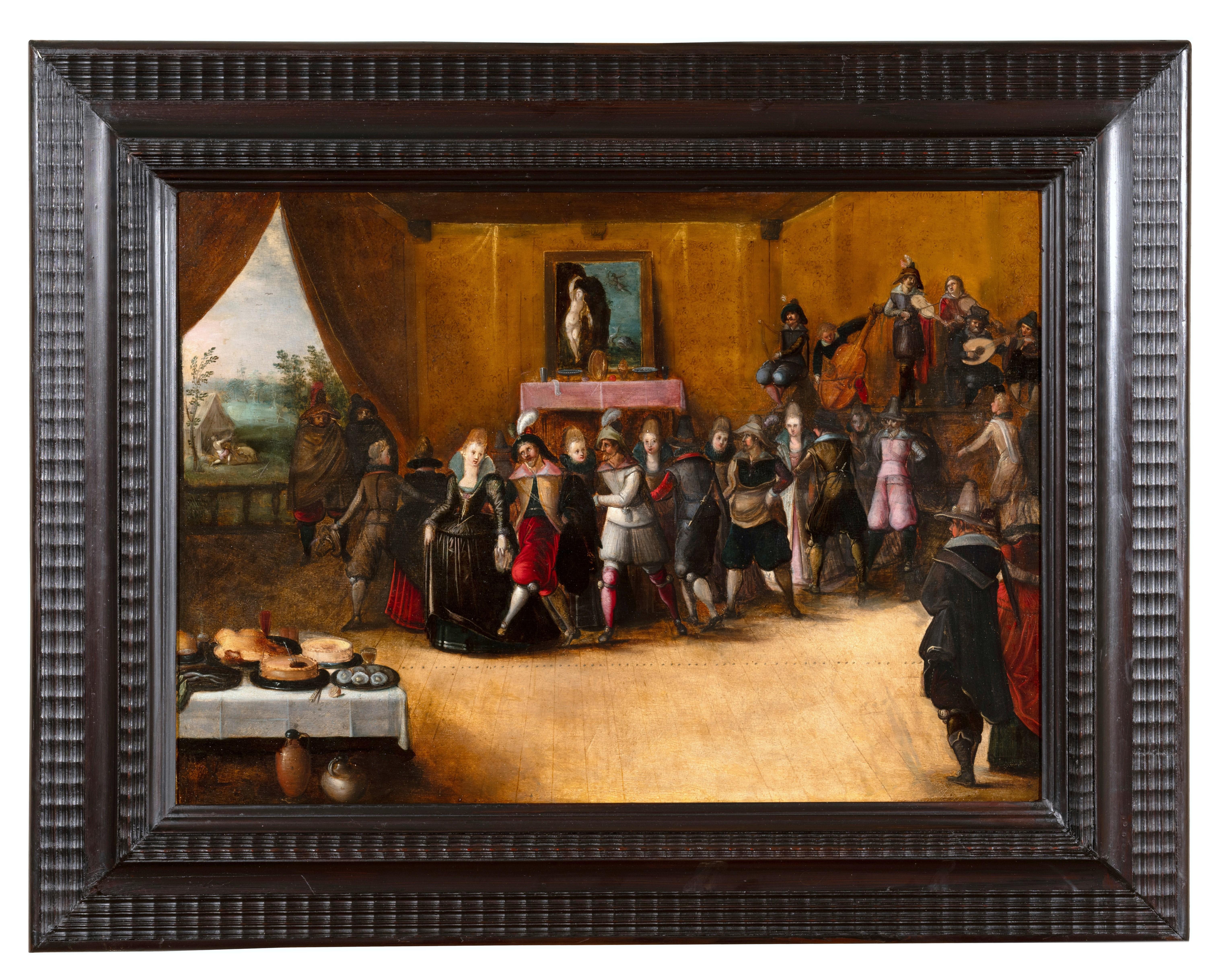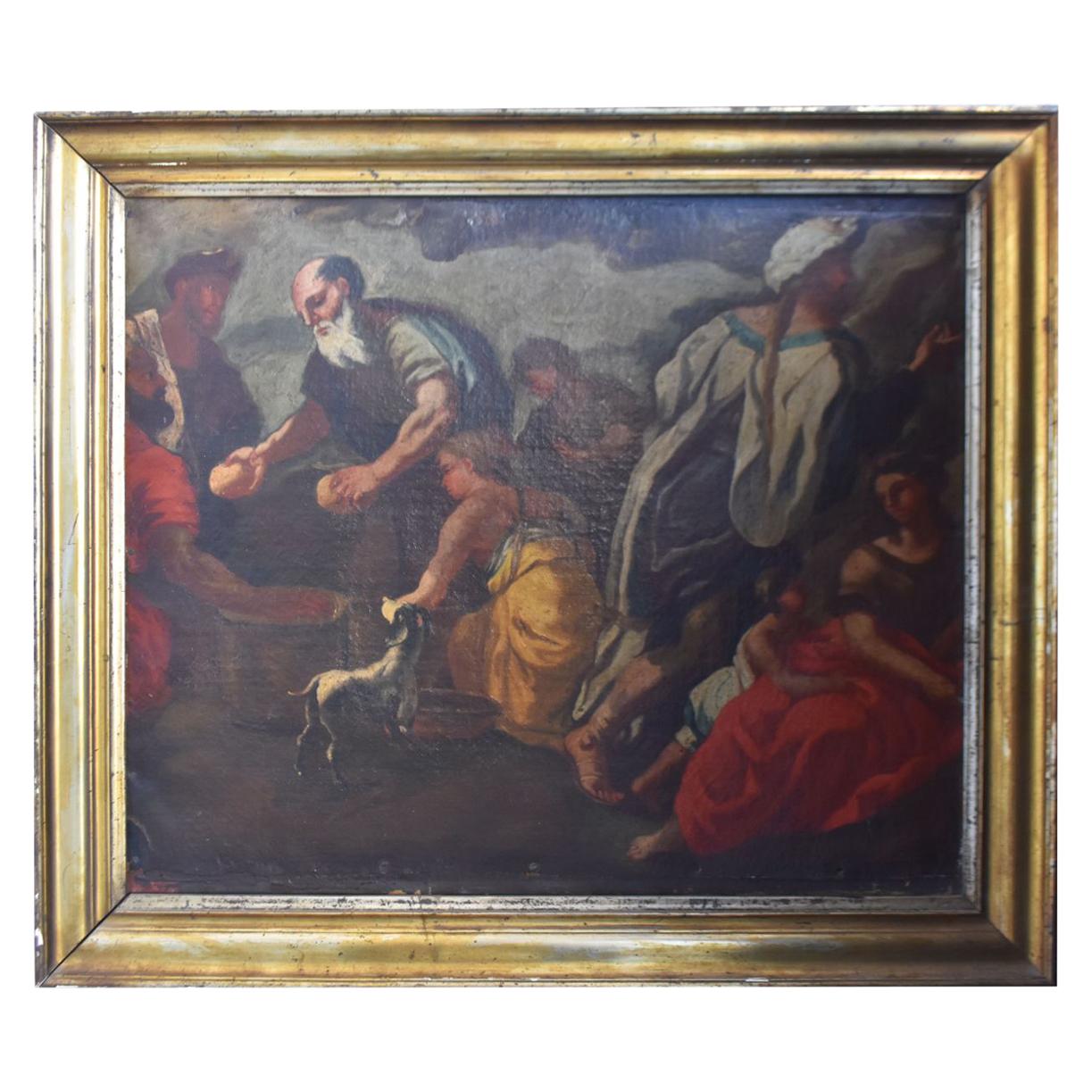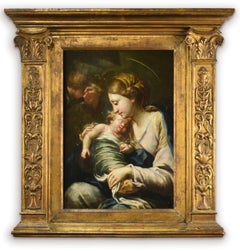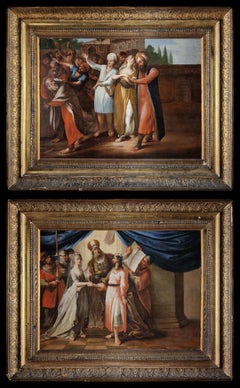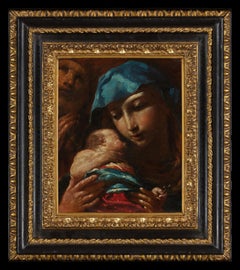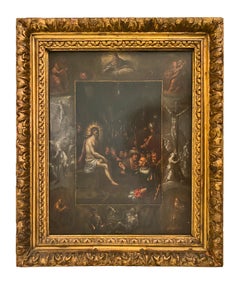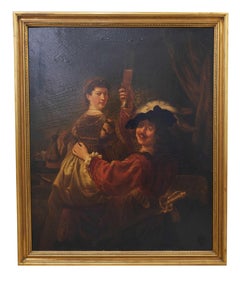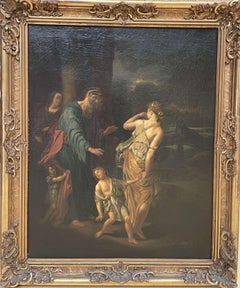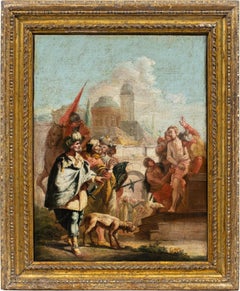Items Similar to 17 Century Italian School panel, The return of the prodigal son
Want more images or videos?
Request additional images or videos from the seller
1 of 5
Unknown17 Century Italian School panel, The return of the prodigal son
$2,072
$2,59020% Off
£1,569.93
£1,962.4220% Off
€1,801.37
€2,251.7220% Off
CA$2,915.64
CA$3,644.5520% Off
A$3,205.09
A$4,006.3620% Off
CHF 1,684.45
CHF 2,105.5620% Off
MX$38,921.45
MX$48,651.8120% Off
NOK 21,013.06
NOK 26,266.3320% Off
SEK 19,908.40
SEK 24,885.5020% Off
DKK 13,444.11
DKK 16,805.1320% Off
About the Item
17th Century Italian School, wood panel, depicting the return of the prodigal son. Very good condition.
- Dimensions:Height: 8.27 in (21 cm)Width: 11.23 in (28.5 cm)
- Medium:
- Period:
- Condition:
- Gallery Location:New York, NY
- Reference Number:1stDibs: LU1599214903062
About the Seller
5.0
Vetted Professional Seller
Every seller passes strict standards for authenticity and reliability
Established in 2007
1stDibs seller since 2021
44 sales on 1stDibs
Typical response time: 2 hours
- ShippingRetrieving quote...Shipping from: London, United Kingdom
- Return Policy
Authenticity Guarantee
In the unlikely event there’s an issue with an item’s authenticity, contact us within 1 year for a full refund. DetailsMoney-Back Guarantee
If your item is not as described, is damaged in transit, or does not arrive, contact us within 7 days for a full refund. Details24-Hour Cancellation
You have a 24-hour grace period in which to reconsider your purchase, with no questions asked.Vetted Professional Sellers
Our world-class sellers must adhere to strict standards for service and quality, maintaining the integrity of our listings.Price-Match Guarantee
If you find that a seller listed the same item for a lower price elsewhere, we’ll match it.Trusted Global Delivery
Our best-in-class carrier network provides specialized shipping options worldwide, including custom delivery.More From This Seller
View AllItalian Genovese Madonna. Beautiful frame.
Located in New York, NY
Italian Madonna, early 18th Century, probably Genovese. Beautiful color palette. Not signed.
Category
Early 18th Century Baroque Figurative Paintings
Materials
Canvas, Oil
Susanna and the Elders & Marriage of the Virgin. French pair, 18th Century.
Located in New York, NY
Pair of late 18th Century french oil paintings, representing the story of Susanna and the Elders & The Marriage of the Virgin.
Category
Late 18th Century Figurative Paintings
Materials
Canvas, Oil
Holy Family, by the bolgonese master.
By Giuseppe Maria Crespi, Lo Spagnuolo
Located in New York, NY
This exquisite painting, resembling a precious jewel, serves as an exceptional illustration of the devotional cabinet paintings created by Giuseppe Maria Crespi, a highly original Bolognese artist during the late 17th and early 18th centuries. Crespi's distinctiveness extended beyond his unique style and technique to the subjects he chose to portray. While his portraits and genre paintings often displayed a light-hearted and even irreverent tone, his treatment of religious themes resonated with deep emotion, even in its most inventive forms.
This recently uncovered work by Crespi is a typical representation, invoking the tender
connection between mother and child, and the Child's destiny, all within a compact and intimate format. Executed on a small scale, the painting showcases Crespi's remarkable sensitivity and mastery of paint, especially evident in the expressive brushwork of the drapery.
The restrained and focused composition of the Holy Family allows for contemplation of the figures. Mary cradles the Christ child gently, seemingly presenting him to the viewer, her gaze
knowing as the infant holds a diminutive cross, symbolizing his future crucifixion. Joseph appears in the background, emerging from the left side of the frame, gazing upward with folded hands in prayer.
Individual motifs from this painting reappear in other works by Crespi, suggesting a synthesis of familiar elements into a vibrant composition. The artist's revisitation of designs throughout his career is evident, and this painting on copper likely belongs to a later period, reflecting stylistic ties to other works and Crespi's increased production of smaller devotional pieces.
Distinguished by its cool palette, bold coloration, and the expressive force of the artist's hand, this Holy Family painting...
Category
Early 1700s Baroque Figurative Paintings
Materials
Copper
$30,400 Sale Price
27% Off
Free Shipping
Mocking of Christ, by Frans Francken (II) and possibly Ambrosius Francken (II)
By Frans Francken II
Located in New York, NY
Mocking of Christ, with all around in grisaille: the Crucifixion, the Resurrection, God the Father, Mankind after the Fall,; in the corners the four evangelists.
J. Dijkstra ao, cat. The paintings of Museum Catharijneconvent, Utrecht (Museum Catharijneconvent) 2002, p. 196, pict., as Frans Francken...
Category
17th Century Mannerist Figurative Paintings
Materials
Copper
$5,200 Sale Price
56% Off
Free Shipping
Latin American Colonial Cuzco School Visitation
Located in New York, NY
Excellent condition. Cuzco School 18th Century oil on canvas of the Visitation. Unsigned.
Category
18th Century Figurative Paintings
Materials
Canvas, Oil
The Inspiration of Saint Matthew
Located in New York, NY
Wonderfull quality, great condition.
Category
Early 19th Century Baroque Figurative Paintings
Materials
Canvas, Oil
You May Also Like
After Rembrandt "The Prodigal Son in the Tavern" Old Master Style Painting
Located in San Francisco, CA
After Rembrandt
"The Prodigal Son in the Tavern"
Old Master Style Painting
Late 19th century - Early 20th century
Oil on Canvas
36.75 x 44.5 unframed
40.5" x 48.5" framed
Category
Late 19th Century Dutch School Portrait Paintings
Materials
Canvas, Oil
Joseph interpreting Dreams - Italian Old Master 17thC religious art oil painting
Located in Hagley, England
This lovely 17th century Old Master religious oil painting is from the Italian School. The subject is Joseph in prison interpreting the dreams of Pharoah's Baker and Butler. The bars...
Category
17th Century Old Masters Portrait Paintings
Materials
Oil
$7,696 Sale Price
20% Off
The Expulsion of Hagar and Ishmael
Located in Edinburgh, GB
Copy of artwork by Adriaen van der Werff "The Expulsion of Hagar and Ishmael"
Artist: Unidentified (18th Century)
Date: Circa 1760–1770
Medium: Oil on canvas
Dimensions:
Framed: 124...
Category
18th Century Rococo Figurative Paintings
Materials
Canvas, Oil
Rococò Venetian painter - 18th century figure painting - Christ led to judgment
Located in Varmo, IT
Venetian painter (18th century) - Christ led to judgment (preparatory sketch).
48 x 36 cm without frame, 62 x 50.5 cm with frame.
Antique oil painting on canvas, in a carved and gi...
Category
Mid-18th Century Rococo Figurative Paintings
Materials
Canvas, Oil
$2,393 Sale Price
42% Off
Attributed à H. Francken II, 17th c. Anwerp - The prodigal son among courtesans
Located in PARIS, FR
The Prodigal Son Among Courtesans
Attributed to Hieronymus Francken II (Antwerp 1578-1623)
Early 17th century Antwerp school
Oil on oak panel,
Dimensions: H. 52.5 cm (20.67 in), W. 74 cm (29.14 in)
Flemish-style moulded wood frame
Frame: h. 78 cm (h. 30.70 in.), w. 100 cm (39.37 in.)
At first glance, this festive and joyful painting depicts a group of elegantly dressed people dancing to the sound of an orchestra in a richly decorated interior with a wide opening onto a rural exterior. However, the real theme is cleverly concealed by the painter and is only discernible through the artifice of a small scene in the background where we see a half-naked man, in the company of the pigs next to a makeshift shelter.
In fact, beyond the pleasant and apparently superficial character of the painting, it is a subject taken from the parable of the prodigal son in the Gospel. The illustrated episode is the prodigal son among courtesans.
Even if the viewer's attention is drawn to the central couple (prodigal son embracing a pretty courtesan) doing the dance steps, the artist takes care in a narrative approach of all the groups and ancillary scenes in order to create a rich and varied composition. Thus the musicians seated on a raised platform are depicted with great skill, their faces animated, their clothes abundantly varied.
The theme of music, which has always been associated with that of sensuality and physical love, helps to exacerbate licentious pleasures.
The merry company dances "Spanish pavane", a slow court dance from the sixteenth century, danced close to the ground by couples arranged in a procession, which was probably introduced to the south of the Netherlands around 1600 during the governance of Albrecht VII and the daughter of the King of Spain Isabella Clara Eugenia in Brussels.
The interior of the house is also carefully elaborated, the embossed leather dyes on the walls, the middle sideboard (typical in Francken interiors), where the rich gold and silver crockery is placed in front of the painting "Andromeda chained to the rock and Perseus arriving to rescue her". The inclusion of a contemporary and probably extant pictorial work is also one of the characteristics of the Francken family, among them Frans Francken the Younger...
Category
Early 17th Century Old Masters Interior Paintings
Materials
Oak, Oil
17th Century Italian School Biblical Scene
Located in Marseille, FR
17th century oil on canvas representation of the "Feeding of the 4,000" of Italian school.
Category
Antique 17th Century French Baroque Paintings
Materials
Canvas
More Ways To Browse
Wood Panel Italian
Italian Painted Panels
Oil Paintings 17 Century
The Prodigal Son
Prodigal Son Painting
Korean Moon Jar
Painted Gucci
Painting By Women Artists
Pulp Magazine
Resurrection Paintings
Safed Israel
Surfer Painting
Taro Okamoto
Vintage Bicycle Painting
Vintage Carousel Painting
Woman With Guitar
Antique Oil Painting Holy Family
Arcadia Contemporary
